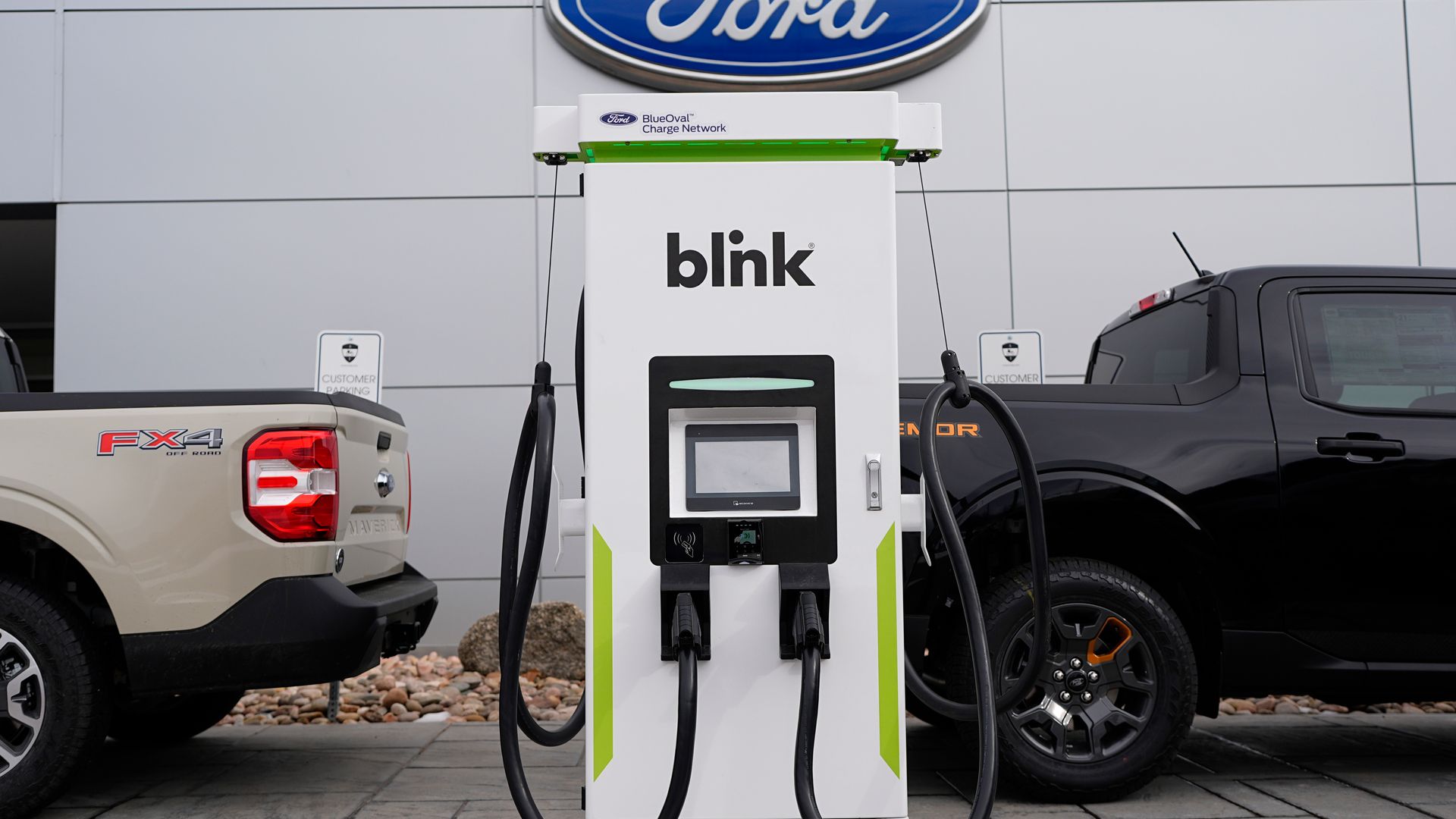
Biden administration reduces emission targets in a win for automakers
By Jack Aylmer (Anchor), Evan Hummel (Producer), Jake Maslo (Video Editor)
This report was created with support from enhanced software.
Media Landscape
See how news outlets across the political spectrum are covering this story. Learn moreBias Distribution
Left
Right
Untracked Bias
The Biden administration has unveiled final rules that aim to make it easier for automakers to continue selling gas-powered models and slow the transition to electric vehicles through 2030. The announcement was made on Wednesday, March 20.
The Environmental Protection Agency (EPA) released a rule that weakens yearly emissions targets through 2030, compared to a stricter plan proposed in April 2023. This move is considered favorable for Detroit automakers and others selling gas-powered models and plug-in hybrid vehicles.

Download the SAN app today to stay up-to-date with Unbiased. Straight Facts™.
Point phone camera here
According to the EPA, the plan will cut fleetwide tailpipe emissions by 50% over 2026 levels and reduce greenhouse gas emissions by 7.2 billion tons through 2055. It is also expected to provide nearly $100 billion of annual net benefits, including $62 billion in reduced annual fuel, maintenance and repair costs.
While some may view the decision as a setback for more aggressive climate change action, the EPA emphasized that automakers would have flexibility in choosing among different technologies to comply with the standards, according to Reuters. EPA Administrator Michael Regan clarified that there is no electric vehicle mandate, and that the industry has multiple options to meet the technology standard.
The final rules reflect reported lobbying efforts by automakers, car dealers, and the United Auto Workers union for more compliance latitude, rather than a rapid transition to an all-electric fleet. Under these rules, the EPA projects that EVs may account for about 30% to 56% of new passenger cars and trucks from 2030 to 2032.
Unbiased news.
Directly to your inbox. Free!
Learn more about our emails. Unsubscribe anytime.
By entering your email, you agree to the Terms & Conditions and acknowledge the Privacy Policy.
President Biden has prioritized the transition to EVs, citing economic and climate benefits. However, political divisions persist, with former President Donald Trump and others criticizing EVs.
The transition to electric vehicles may be slower than originally proposed, but the new rules are reportedly expected to significantly reduce pollution and improve public health.
[JACK AYLMER]
THE BIDEN ADMINISTRATION UNVEILED FINAL RULES MAKING IT EASIER FOR AUTOMAKERS TO CONTINUE SELLING GAS VEHICLES, SLOWING THE TRANSITION TO E-VS.
THE EPA RULE CUTS YEARLY EMISSION TARGETS THROUGH 2030, COMPARED TO A STRICTER PLAN PROPOSED IN APRIL 2023. THIS MOVE IS CONSIDERED A WIN FOR AUTOMAKERS.
THE EPA SAYS THE PLAN WOULD CUT TAILPIPE EMISSIONS BY ABOUT 50 PERCENT OVER 2026 LEVELS AND REDUCE GREENHOUSE GAS EMISSIONS BY 7.2 BILLION TONS THROUGH 2055. ADDITIONALLY, IT’S EXPECTED TO PROVIDE NEARLY 100 BILLION DOLLARS OF ANNUAL NET BENEFITS, INCLUDING 62 BILLION DOLLARS IN REDUCED ANNUAL FUEL, MAINTENANCE, AND REPAIR COSTS.
WHILE THE DECISION MAY DISAPPOINT ADVOCATES FOR MORE AGGRESSIVE CLIMATE CHANGE ACTION, THE EPA SAYS AUTOMAKERS HAVE FLEXIBILITY IN CHOOSING DIFFERENT TECHNOLOGIES TO COMPLY WITH THE STANDARDS. THE AGENCY SAYS THERE IS NO ELECTRIC VEHICLE MANDATE AND THE INDUSTRY HAS MULTIPLE CHOICES TO MEET THE TECHNOLOGY STANDARD.
THE FINAL RULES REFLECT LOBBYING EFFORTS BY AUTOMAKERS, CAR DEALERS, AND THE UNITED AUTO WORKERS UNION WHO WANTED MORE TIME TO ADJUST,, RATHER THAN A RAPID SWITCH TO ALL ELECTRIC VEHICLES. UNDER THESE RULES, THE EPA PROJECTS EVS MAY ACCOUNT FOR ABOUT 30 PERCENT TO 56 PERCENT OF NEW CARS AND TRUCKS FROM 2030 TO 2032.
PRESIDENT BIDEN MADE THE TRANSITION TO EVS A SIGNATURE ISSUE OF HIS PRESIDENCY, STRESSING THE ECONOMIC AND CLIMATE BENEFITS.
Media Landscape
See how news outlets across the political spectrum are covering this story. Learn moreBias Distribution
Left
Right
Untracked Bias
Straight to your inbox.
By entering your email, you agree to the Terms & Conditions and acknowledge the Privacy Policy.
MOST POPULAR
-
 AP Images
AP Images
Fox News, Newsmax among 40 outlets asking Trump to reinstate AP access
Watch 3:586 hrs ago -
 Getty Images
Getty Images
White House denies Trump is moving to take over USPS despite report
Watch 2:467 hrs ago -
 U.S. Marshals Service
U.S. Marshals Service
US Marshals Service deputizes Musk’s private security detail: Reports
Watch 0:5612 hrs ago -
 Getty Images
Getty Images
Senate passes budget resolution after overnight 'vote-a-rama'
Watch 9:1613 hrs ago




